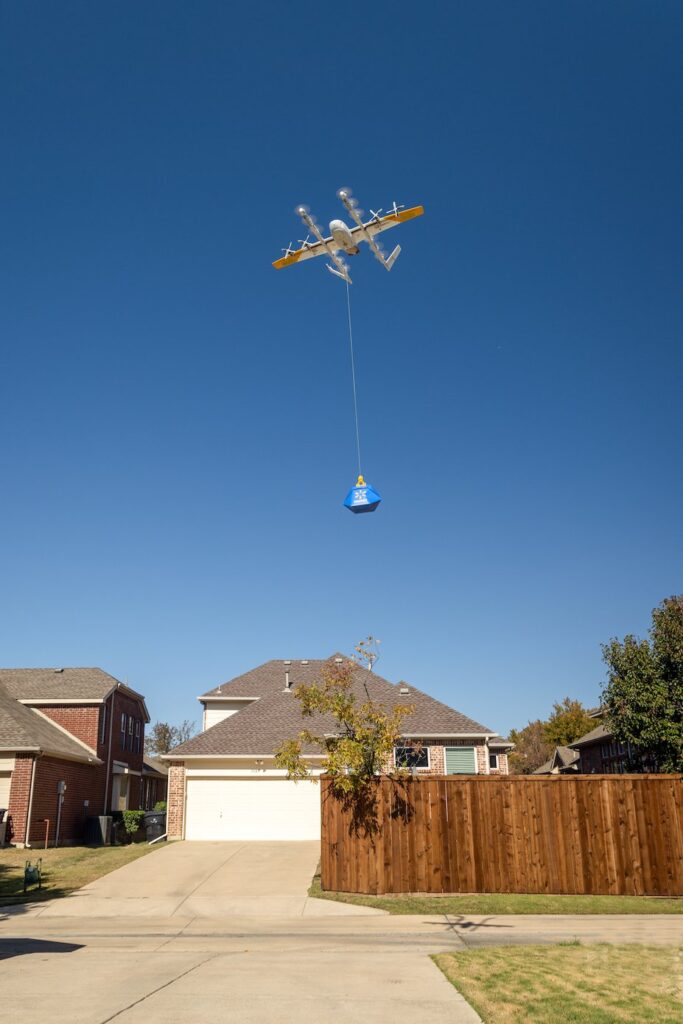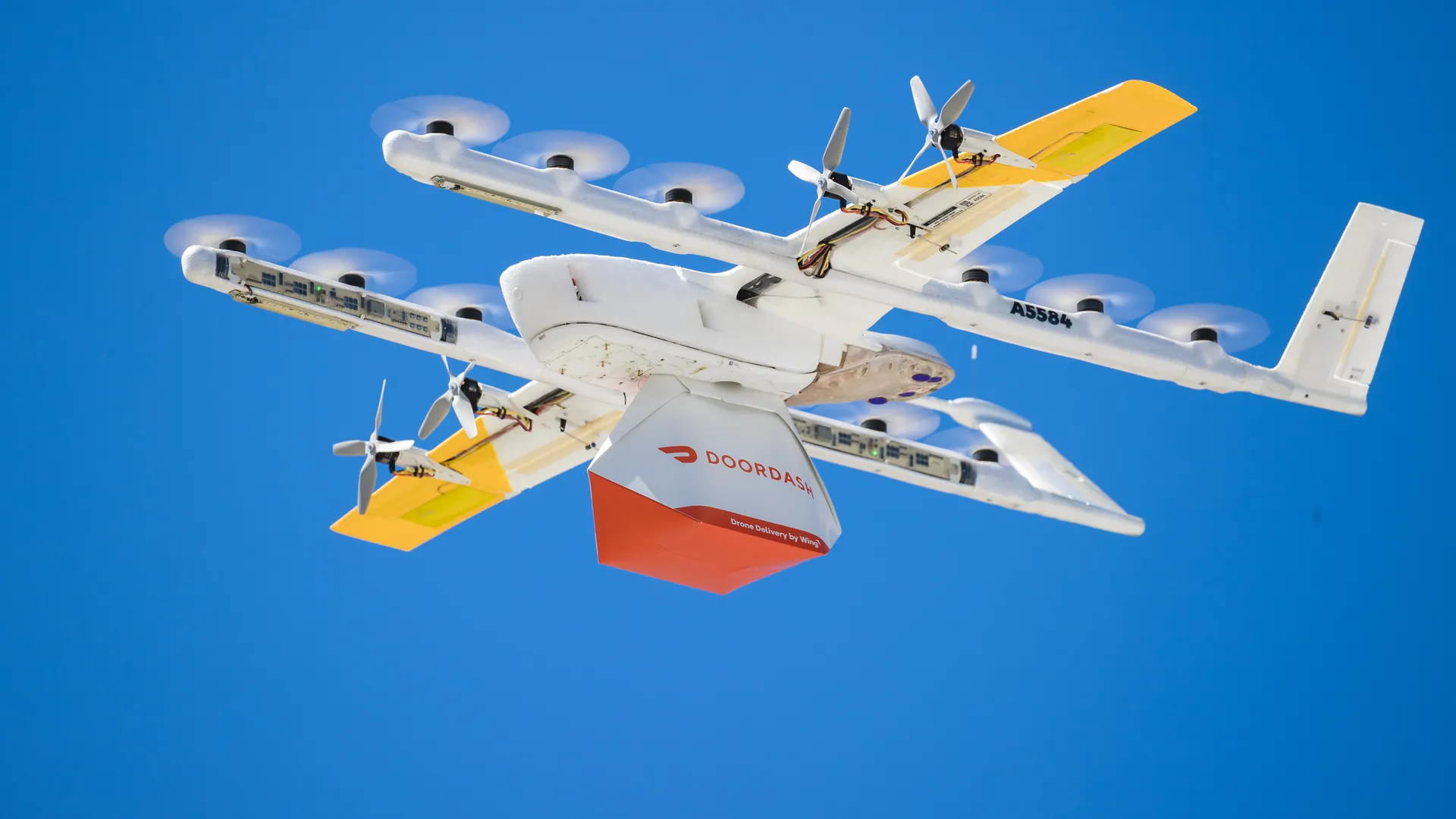Imagine this: You tap a few buttons on your DoorDash app, order a burrito, and less than 10 minutes later – without any traffic, detours, or drivers – your lunch descends from the sky on a high-tech tether. No delays. No soggy fries. Just a drone, a box, and the future landing in your backyard.
Welcome to Charlotte, North Carolina – the latest U.S. city to embrace drone-based food delivery.
In a major milestone for both convenience and logistics innovation, Alphabet’s Wing, in partnership with DoorDash, has launched a drone delivery program servicing a four-mile radius around the Arboretum Shopping Center in Charlotte. The initiative marks a serious step forward in bringing drone tech from pilot programs to actual, real-world users – and makes Charlotte a test bed for what could become the norm across America.
But what’s the bigger story here? This moment isn’t just about flying tacos. It’s the result of over a decade of research, a major shift in regulatory approval, and strategic plays from a small set of powerful drone companies ready to take over the skies.
Let’s break down the three major drone delivery players, analyze what’s happening in Charlotte, and examine how this all fits into a rapidly evolving $38 billion market.
2023: A Breakout Year for Drone Delivery
Last year changed everything.
After years of stalling due to FAA restrictions, the U.S. drone delivery industry received a tailwind of federal approvals in 2023. The FAA began granting permissions for beyond visual line of sight (BVLOS) operations, allowing drones to travel longer distances without constant human monitoring. That one move unlocked scale – and gave the green light for serious commercial partnerships.
As a result, companies like Wing, Zipline, and Matternet went from testing to executing. Major corporations like Walmart, UPS, and DoorDash jumped in. What was once a tech curiosity is quickly becoming a logistical revolution.
The Big 3: Who Really Owns the Sky?
1. Wing (Alphabet)
Wing is the brainchild of Alphabet’s moonshot incubator, X – the same innovation lab that brought us Google Glass and self-driving cars. But unlike those projects, Wing is flying high with very real-world applications.
With over 350,000 deliveries globally, Wing is currently the most experienced drone delivery company in the U.S. market. Their drones are VTOL-enabled (vertical takeoff and landing), fly at 65 mph, and use a secure tether to lower packages with pinpoint accuracy.
The Charlotte launch with DoorDash is a huge deal – not just because of the partnership, but because it shows Wing can scale in populated environments.
Key stats:
FAA approval for BVLOS operations
DoorDash partnership launched in Charlotte (2024)
350K+ deliveries in Australia, Finland, and the U.S.
Operating in Dallas, Logan (Australia), and now Charlotte
Parent Company: Alphabet (GOOG)
Wing isn’t just competing – they’re shaping the rules.

2. Zipline
While Wing dominates in urban/suburban markets, Zipline carved its legacy out of necessity. The company started by delivering critical medical supplies in Rwanda and Ghana, helping bridge the healthcare gap in remote regions. With over 600,000 successful deliveries, Zipline is the world’s largest humanitarian drone delivery network.
In 2023, they launched Platform 2 – a sleek, silent, fixed-wing drone with a detachable delivery droid that glides silently to your doorstep. It’s designed for U.S. suburban delivery and already in use with partners like Walmart, GNC, and Sweetgreen.
Key stats:
Over 600,000 medical deliveries globally
Platform 2 launched for U.S. suburban markets
Walmart pilot sites in Arkansas and Utah
Partnerships expanding to food, wellness, and retail
Private Valuation: $1.6B (as of 2023)
Zipline may have started in Africa – but they’re gliding fast into American backyards.
3. Matternet
Matternet was the first drone company to receive FAA Type Certification in the U.S., meaning their M2 drone system passed strict regulatory and safety evaluations. Unlike Wing and Zipline, Matternet focuses on short-range, high-priority medical deliveries, especially in hospital systems.
Their key partner is UPS, through the company’s drone subsidiary UPS Flight Forward. In hospitals, Matternet drones have reduced sample transport times from hours to minutes.
Key stats:
FAA Type Certification achieved
Deployed across hospital campuses
Operating in North Carolina and Switzerland
Specializing in high-speed healthcare logistics
Estimated Valuation: $150M
While not yet in the food game, Matternet’s precision model may soon expand to retail and consumer sectors as the tech scales.
Charlotte: A Case Study in What’s Next
With Wing and DoorDash launching in Charlotte, the Queen City is now a living laboratory for suburban drone delivery.
Customers in the Arboretum area can now order food from select restaurants, with drones dropping meals via tether in under 10 minutes. The 4-mile range allows for quick testing of last-mile optimization, and DoorDash’s customer base offers instant scalability.
This isn’t Wing’s first U.S. operation – they’ve already delivered in Dallas – but Charlotte’s diverse geography, traffic, and suburban sprawl make it an ideal blueprint for national expansion.
Why Charlotte Matters:
Tests dense suburban logistics models
Showcases Wing’s ease of urban integration
Builds consumer trust in autonomous delivery
Positions DoorDash as a next-gen logistics provider
For locals, it’s a convenience. For the industry, it’s a signal flare: drone delivery is no longer coming – it’s here.
The Sky-High Market: Forecast and Fuel
According to Fortune Business Insights, the drone delivery market is expected to grow from $1.5 billion in 2023 to $38 billion by 2030 – a jaw-dropping CAGR of 53%.
Key drivers:
FAA BVLOS permissions
Growing investment from Big Tech and logistics
Rising fuel prices and climate pressure
Urbanization and demand for faster fulfillment
But the industry isn’t without challenges:
Regulatory inconsistency across states
Public concerns over safety and noise
Limited payload sizes (mostly under 7 pounds)
Complex air traffic coordination
Still, the math speaks for itself. Every time a drone replaces a car for a 1-mile delivery, that’s fewer emissions, lower labor costs, and faster ETAs. It’s not just innovation – it’s economic inevitability.
Market Metrics: Top 3 U.S. Drone Delivery Performers (Q2 2025)
Company Est. Market Share Estimated Valuation Major Partners
Wing (Alphabet) ~40% $2.5B+ (as part of Alphabet) DoorDash, Walgreens
Zipline ~30% $1.6B Walmart, GNC, Sweetgreen
Matternet ~15% $150M UPS, Swiss Post
Alphabet’s Wing leads in market presence and delivery volume, but Zipline’s innovation and humanitarian branding give it strong momentum. Matternet remains dominant in medical logistics but is watching the consumer delivery space closely.
Final Approach: The Future Is Looking Up
What’s happening in Charlotte is more than a headline – it’s a turning point.
The drone delivery revolution has officially cleared for takeoff. With FAA support, consumer excitement, and serious capital in the game, these aerial couriers are shaping the future of fulfillment. And it’s happening fast.
Wing’s partnership with DoorDash in Charlotte is a powerful signal: this technology works, it scales, and people want it. Soon, what’s novel in North Carolina may become ordinary everywhere else.
The next time you’re hungry, you might just look to the sky.
Sources:
WSOC-TV: Drone Food Delivery Comes to Charlotte
Forbes: The Big 3 in U.S. Drone Delivery
Fortune Business Insights – Drone Delivery Market


0 Comments